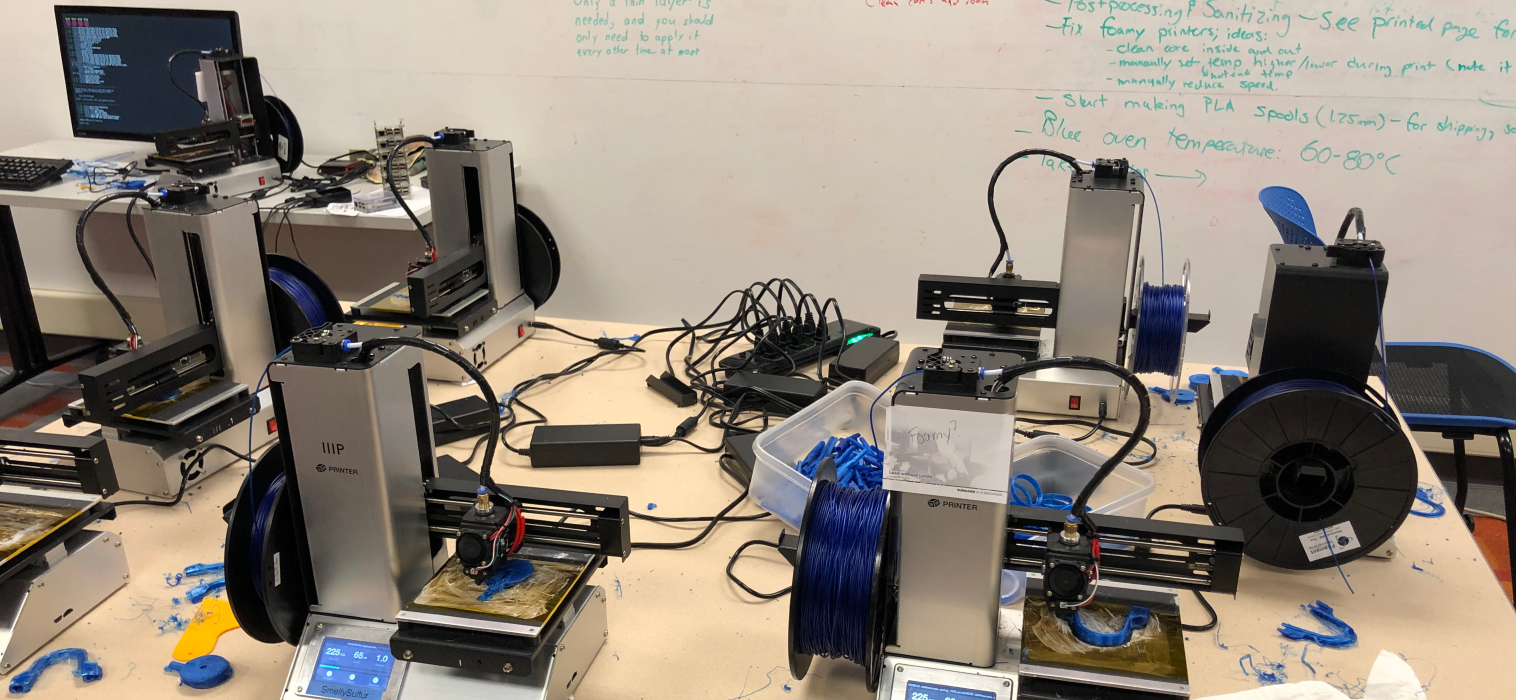Printing Medical Equipment
Members of the Moravian College 3D Printing Team, led by Jeffrey Bush, instructor of computer science, built stethoscopes and face shields to fill a need in the local healthcare community.
By Seth Rappaport ’21
On a school night last spring, William Brandes ’21 was alone working in the computer lab. The rise of COVID had forced Moravian College to close the campus, and most students had returned home. It was past midnight, and all was quiet in the lab except for the constant mechanical hum issuing from the
12 3D printers. Brandes, a member of the Moravian College 3D printing team, was tasked with repairing the machines when they malfunctioned at night. “We were running the printers 24/7,” says Brandes. “I was the only one still living on campus, so I took the graveyard shift.”
Brandes was one of a crew of four students assembled by Jeffrey Bush, instructor of computer science, to build stethoscopes for local healthcare providers using 3D technology. In 3D printing, the printer follows a digital design of a 3-dimensional object and lays down layer upon layer of molten material (plastic, for example) to build that object. Mark Morykan ’22, Brandon Adams ’21, and Riley Kirkpatrick ’21, also members of the college 3D printing team, were the others. “Jeff Bush contacted the few of us on the team that lived nearby and could commute every day,” says Morykan. “We all stepped up and became a part of this cause.”
Inspiration for the project came to Bush after reading several articles about groups that were putting 3D printers to work during the pandemic, including one story about a group in Italy printing ventilator adapter pieces. He started looking into the needs locally.
St. Luke’s University Health Network had been struggling to maintain a supply of stethoscopes. “They were committing one stethoscope to every patient, not wanting to cross-contaminate, and they didn’t have the facilities to sterilize enough of them every day,” says Bush.
While St. Luke’s crafted about five stethoscopes daily with their 3D printers, Bush’s students produced 20 a day, making them blue and silver to add a Moravian College touch.
Seeing a need for face shields, the crew expanded their operation, printing shields for the Lehigh Valley Health Network and others in the community: dental groups and emergency responders, such as EMTs, all of which struggled to obtain face shields due to the high demand at hospitals.
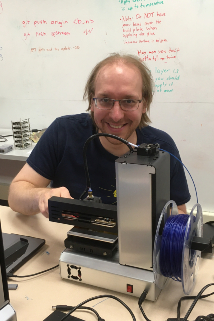
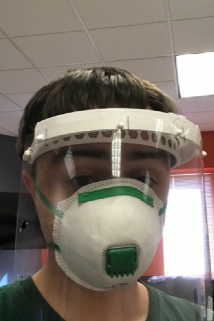
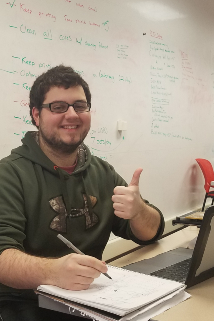
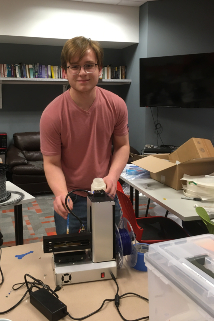
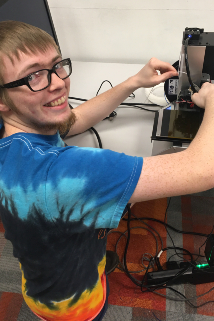
Members of the 3D printing team (from left to right): Faculty advisor Jeffrey Bush, William Brandes ’21, Mark Morykan ’22, Brandon Adams ’21, and Riley Kirkpatrick ’21
An Extraordinary Effort
The work of printing stethoscopes and face shields was demanding. The 3D printers often produced misshapen pieces that required wearisome sanding. The constant running of the machines overtaxed the printers and they would break down, hence Brandes’s graveyard shift to keep them going round the clock. Morykan’s shift began at 6, 7, or 8 in the morning. “I was assembling stethoscopes while monitoring the printers and starting new prints as soon as they finished,” he says.
All of this work took place while students were still in classes, finishing up the spring semester. “They were just transitioning to online classes and getting ready for finals week,” says Bush.
“It was a little tricky managing my time because I was working at the same time that I had most of my classes,” says Morykan. “I wasn’t always very active during class, but that just made me work harder later on in the day.”
Brandes, with his graveyard shifts, found getting into a routine difficult at first but soon adapted. “Once I had adjusted to getting off work at 6 a.m., I was able to get a ‘normal’ routine and schedule going,” he says. “Classwork went fairly smoothly, and professors were usually understanding.”
While they didn’t have much free time and didn’t see much of each other as they took their shifts in the lab and attended virtual classes, the crew’s camaraderie provided important support. “We are a team and a strong group of friends,” says Morykan. “Brandon Adams was one of the liveliest spirits in the lab. He would often come two or three hours before his shift because he wanted to help and hang out.”
Collaboration
To ensure success in delivering excellent products, Bush’s team collaborated with other Moravian College academic departments. Our nurses tested the stethoscope designs to make sure they functioned properly, and the art department gave access to a Cricut machine, a programmable blade that the crew used to cut the fabric components for the stethoscopes. The chemistry department opened their labs in the Collier Hall of Science, where the students sterilized the finished face shields and stethoscopes in large ovens. They would then dress in full personal protective gear to avoid contaminating the equipment as they packaged it.
Meanwhile, off-campus, several people who owned 3D printers helped the crew by printing some pieces of the face shields and stethoscopes and delivering them to the students for assembly. This eased some of the burden on students as they strove to complete their spring semester.
A Meaningful Experience
The crew continued their work together until finals week in May, delivering 500 stethoscopes and 200 face shields. The experience of serving a community in need gave them a new perspective on the global crisis. “This work definitely gave me a more hopeful outlook on the pandemic,” says Brandes. “I think, along with everyone else on the 3D printing team and the wider 3D printing community, that we had a pretty significant impact.”
“It could very well be a once-in-a-lifetime opportunity to aid in the fight against a pandemic,” says Morykan. “The work was very much worth the effort.”
Seth Rappaport ’21 is an English major.
Note: With deep sadness, we report that Brandon Adams passed away on September 13, 2020, due to illness unrelated to COVID. His contribution to the team in the midst of the pandemic will not be forgotten. “He was a pleasure to work with and see every day,” says Morykan. “We wouldn’t have reached our goals without him."

